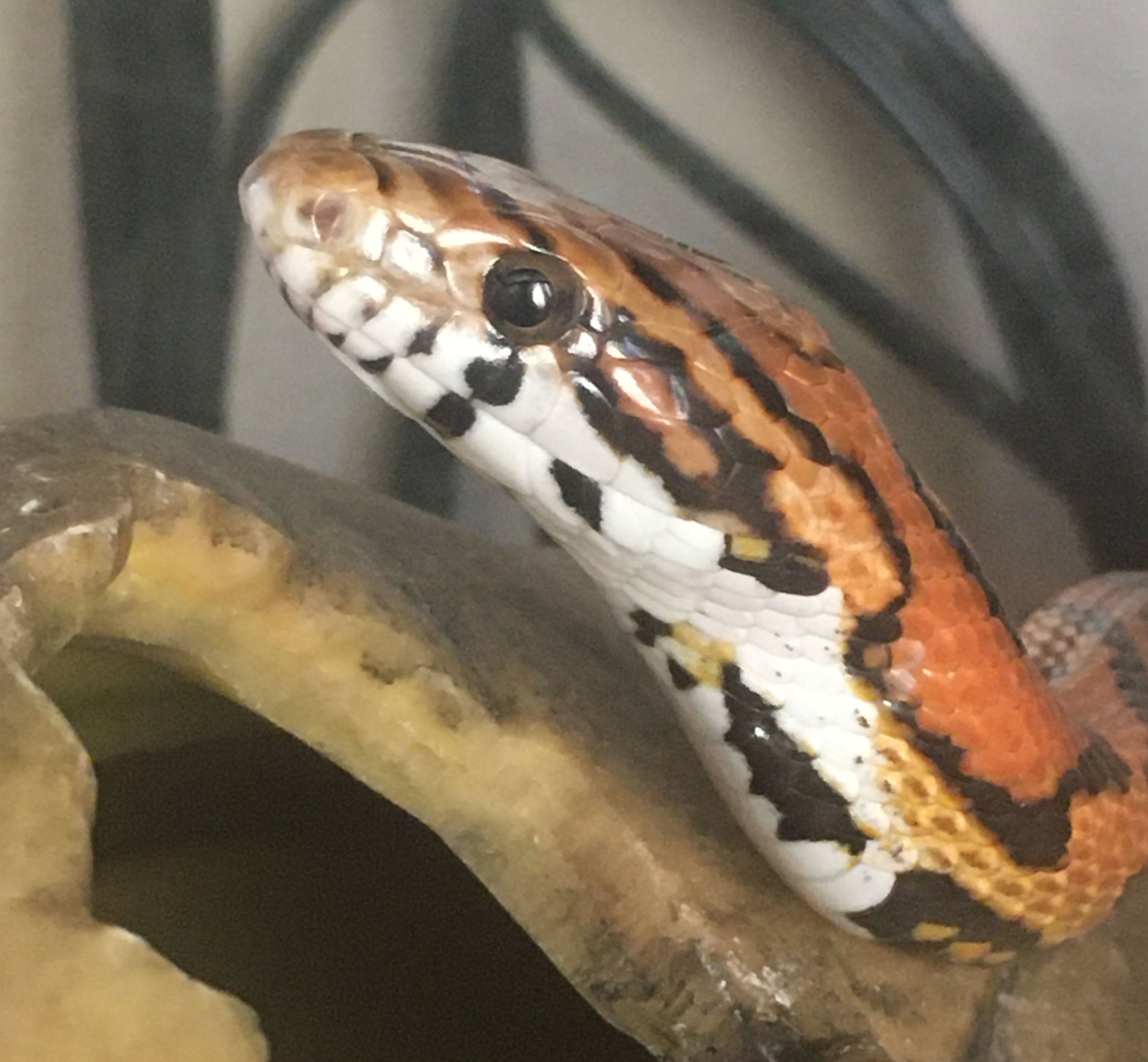
Difficulty: Beginner
- Size: Adults can generally be housed in a commercially available enclosure
- Escape Artist: Make sure these snakes are housed securely
- Humidity: More manageable humidity requirements than some other species
Adult Size
- 4-6 feet (1.22 to 1.83 meters)
- Females tend to be on the larger side of this range
Life Cycle
- Average Lifespan: 10-20+ Years
- Oviparous - Egg Layers
Enclosure Size
- 36x18x18 inches minimum
- Bigger is always better as long as you don't leave the enclosure bare and can maintain necessary environmental conditions
Husbandry Values
- Temperature:
- Ambient: 75-80°F (23.89-26.6°C)
- Basking: 85-90°F (29.4-32.2°C)
- The basking area should never exceed 95°F (35°C)
- Humidity: 40-50% (50-60% while in shed)
- Lighting: No specific requirements
- UV Light can be beneficial
Diet
- Carnivore: Rodents
Behavior Notes
- Opportunistic climber: This snake may utilize climbing décor if provided
- Nocturnal this snake is most active after dark
- Constrictor: This snake eats by attacking and constricting its prey
- Expressive: This snake may vibrate its tail or musk when threatened
- Darty Behavior: These snakes can move very quickly
***These care sheets assume that you understand the basics of snake care & husbandry.
If you are a new snake owner, it is recommended that you read our articles on general reptile care and then fine tune the requirements for the specific species you are interested in.
Habitat
The corn snake is found throughout the eastern and southeastern United States. They live in a variety of habitats, like forests, grasslands, farmland and wetlands.
They are terrestrial snakes but very adept climbers, utilizing trees, rocky outcroppings and more.
Feeding
This species is carnivorous and feeds on rodents. Feeding a rodent that is big around as the snake’s girth an average of once about every 7 days is a good rule of thumb to use here. Monitor the snake’s weight. As your snake reaches adulthood, you may feed less frequently to avoid obesity.
This snake is naturally nocturnal and will do well feeding at night.
References
Photo Credit
- Banner - Glenn Bartolotti, creative commons. https://en.wikipedia.org/wiki/Corn_snake#/media/File:Corn_snake_close_up.jpg
- Article Body - Laila Quick
